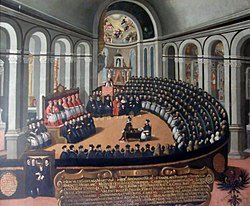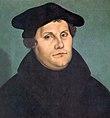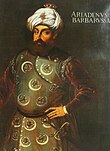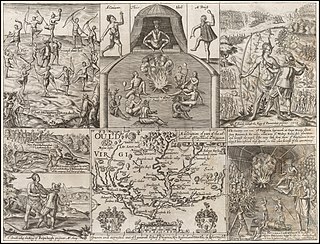
1608 (MDCVIII) was a leap year starting on Tuesday of the Gregorian calendar and a leap year starting on Friday of the Julian calendar, the 1608th year of the Common Era (CE) and Anno Domini (AD) designations, the 608th year of the 2nd millennium, the 8th year of the 17th century, and the 9th year of the 1600s decade. As of the start of 1608, the Gregorian calendar was 10 days ahead of the Julian calendar, which remained in localized use until 1923.

The 1490s decade ran from January 1, 1490, to December 31, 1499.
The 1540s decade ran from 1 January 1540, to 31 December 1549.

1594 (MDXCIV) was a common year starting on Saturday of the Gregorian calendar and a common year starting on Tuesday of the Julian calendar, the 1594th year of the Common Era (CE) and Anno Domini (AD) designations, the 594th year of the 2nd millennium, the 94th year of the 16th century, and the 5th year of the 1590s decade. As of the start of 1594, the Gregorian calendar was 10 days ahead of the Julian calendar, which remained in localized use until 1923.

Year 1540 (MDXL) was a leap year starting on Thursday of the Julian calendar.

The 1500s ran from January 1, 1500, to December 31, 1509.
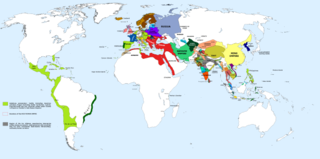
The 1550s decade ran from January 1, 1550, to December 31, 1559.

Year 1558 (MDLVIII) was a common year starting on Saturday of the Julian calendar.

Year 1559 (MDLIX) was a common year starting on Sunday of the Julian calendar.

Year 1547 (MDXLVII) was a common year starting on Saturday of the Julian calendar.

Year 1509 (MDIX) was a common year starting on Monday of the Julian calendar.
Year 1491 (MCDXCI) was a common year starting on Saturday of the Julian calendar.
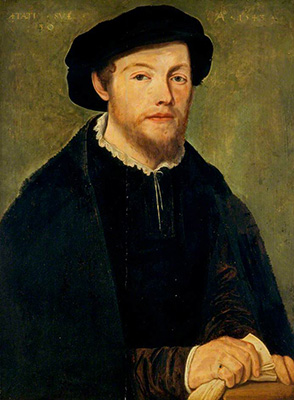
George Wishart was a Scottish Protestant Reformer and one of the early Protestant martyrs burned at the stake as a heretic.

David Beaton was Archbishop of St Andrews and the last Scottish cardinal prior to the Reformation.
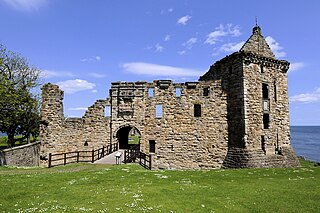
St Andrews Castle is a ruin located in the coastal Royal Burgh of St Andrews in Fife, Scotland. The castle sits on a rocky promontory overlooking a small beach called Castle Sands and the adjoining North Sea. There has been a castle standing at the site since the times of Bishop Roger (1189–1202), son of the Earl of Leicester. It housed the burgh’s wealthy and powerful bishops while St Andrews served as the ecclesiastical centre of Scotland during the years before the Protestant Reformation. In their Latin charters, the Archbishops of St Andrews wrote of the castle as their palace, signing, "apud Palatium nostrum."

The European wars of religion were a series of wars waged in Europe during the 16th, 17th and early 18th centuries. Fought after the Protestant Reformation began in 1517, the wars disrupted the religious and political order in the Catholic countries of Europe, or Christendom. Other motives during the wars involved revolt, territorial ambitions and great power conflicts. By the end of the Thirty Years' War (1618–1648), Catholic France had allied with the Protestant forces against the Catholic Habsburg monarchy. The wars were largely ended by the Peace of Westphalia (1648), which established a new political order that is now known as Westphalian sovereignty.

The Rough Wooing, also known as the Eight Years' War, was part of the Anglo-Scottish Wars of the 16th century. Following its break with the Catholic Church, England attacked Scotland, partly to break the Auld Alliance and prevent Scotland being used as a springboard for future invasion by France, partly to weaken Scotland, and partly to force the Scottish Parliament to confirm the existing marriage alliance between Mary, Queen of Scots, and the English heir apparent Edward, son of King Henry VIII, under the terms of the Treaty of Greenwich of July 1543. An invasion of France was also contemplated.
Norman Leslie, was a 16th-century Scottish nobleman. The leader of the party which assassinated Cardinal Beaton, he was forced to flee Scotland, serving the monarchs of England and France. He died serving the latter in 1554.

The siege of St Andrews Castle (1546–1547) followed the killing of Cardinal David Beaton by a group of Protestants at St Andrews Castle. They remained in the castle and were besieged by the Governor of Scotland, Regent Arran. However, over 18 months the Scottish besieging forces made little impact, and the Castle finally surrendered to a French naval force after artillery bombardment. The Protestant garrison, including the preacher John Knox, were taken to France and used as galley slaves.
Alexander Crichton of Brunstane,, was a Scottish Protestant laird who advocated the murder of Cardinal David Beaton and supported the plan for the marriage of Mary, Queen of Scots and Prince Edward of England. In contemporary letters and documents Alexander is known by variant spellings of "Brunstane," his territorial designation. The original House of Brunstane was near Penicuik, and another Crichton estate at Gilberstoun near Portobello, Edinburgh later became known as Brunstane.
